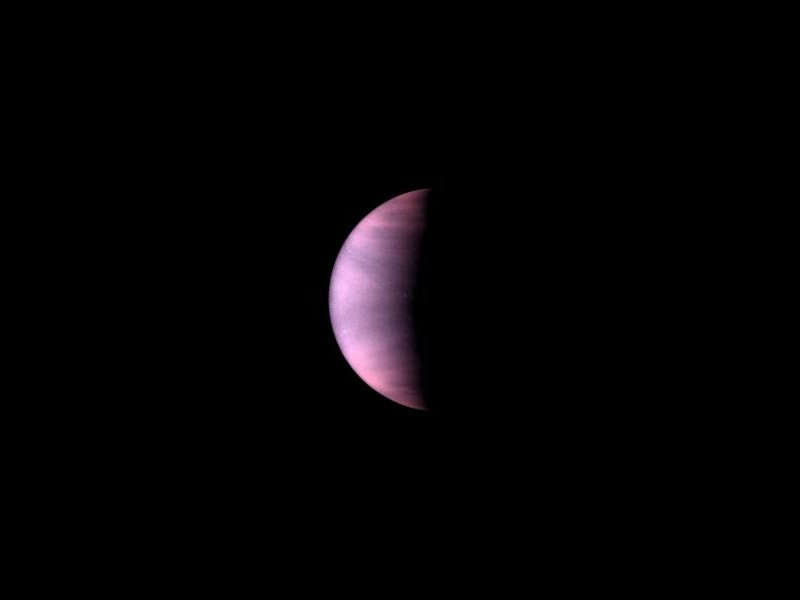Haven’t you noticed how whenever we talk about space exploration or signs of life on other planets, it is either Mars, Jupiter, or the exoplanets? No one’s ever notified Venus, especially in recent decades, when it has been totally overlooked.
Why has Mars always stolen the spotlight?
Over the last decades, space exploration missions by NASA/ ESA has been focused on this peculiar planet. If we look closely at the night sky, Mars is visible as a tiny red dot. Telescopic analysis and early Viking missions reveal it to have a cold and barren surface pretty much deserted.
What changed this view of ours is when Mars attempted to hit us with meteorites. Scrutinizing the Martian meteorites viewed minuscule structures that resembled bacteria on Earth. Further expeditions revealed further hints and clues about these structures’ chemical compositions and thus the quest to find out more about them made Mars the ultimate mystery in our solar system.
A bit about Venus
Venus is the second planet after Mercury to be closest to the Sun. It has been named after a Roman Goddess who represents love and beauty. Since Venus lies within the Earth’s orbit, it can be seen as a bright reddish dot just after dusk or right before dawn. It takes 243 days to orbit the Sun, and it has got no moons, a similarity shared with Mercury and in contrast with all other planets.

Venus is a terrestrial planet, which means it is composed of silicate rocks and metals. This makes it similar to Earth. It has a very congested atmosphere, with more than 96 percent of it being Carbon dioxide. It also has a very high atmospheric pressure, approximately 92 times more than Earth’s sea level.
Venus is the hottest planet of our Solar system, with a standard temperature of 464 degrees Celsius. Its surface is wrapped in an opaque layer of sulfuric acid clouds, dry and desiccated with slabs of rock. Venus has a similar size to that of Earth. This adds another standard feature with Earth, the first being that both are two of the four terrestrial planets of the solar system. Its diameter is only 640 km less than that of Earth’s, and its mass is 82 percent of the Earth’s. 80 percent of the surface of Venus is covered with volcanoes.
Cloudy with a chance of microbial life
On September 14, a group of scientists from the Massachusetts Institute of Technology announced that they detected the presence of Phosphine gas on the surface. In an interview, they claimed that this did not necessarily prove life, but they got such an idea because this gas is produced by many microorganisms on Earth. More research needs to be done about the geochemistry of Venus before confirming any discovery.
Scientists propose that the clouds may create a humid and habitable land for microbial life since most bacteria prefer humid and warm conditions to thrive. The clouds also have a suitable atm to support life. The microbe floating in the clouds could be coated with cyclo-octa-Sulfur to convert UV light into visible one and use it for photosynthesis.
A brief timeline of missions to Venus
On March 1, 1966, the Soviet space probe Venera 3 crash-landed on the planet Venus, making it the first spacecraft ever to reach another planet’s surface. Following a few failed attempts, Venera 7 became the first successful probe to land on Venus on December 15, 1970, followed by Venera 8 (1972), and Venera 9 and 10 (1975). In 1978, Venera 11 and Venera 12 then dropped descent vehicles with cameras and other equipment on the planet, while in 1981, the Venera 13 and Venera 14 landers carried out further research. In 1983, Venera 15 and Venera 16 subsequently entered orbit around Venus and analyzed the planet’s upper atmosphere and surface geology.

It’s not just the Soviets/Russians that have been studying Venus, however, with the US Mariner 10 probe passing within 5,768 km of the planet Venus during a flyby on its way to Mercury in 1974, and probes that have been placed in orbit around the planet for a while including the American Magellan probe (1990) which collated data in for four years, and the European Space Agency’s Venus Express mission (2006).
What the future holds
Many projects have been planned to be launched by NASA throughout the 2020s to explore the atmospheric conditions and landscape of Venus. An example DAVINCI, all set to be launched in 2021 to probe atmospheric conditions. It stands for Deep Atmosphere Venus Investigation of Noble gases, Chemistry, and Imaging.
REFERENCES:
- Our long fascination with the journey to Mars, Paulo de Souza.
- CSIRO On Venus, Cloudy with a chance of microbial life.
- New York Times 10 interesting facts about the missions to Venus,
- astronomytrek.com
Also, Read: The mystery behind Mars Quakes

Aniqa Mazhar is a graduate of QAU in Biochemistry. She has taught sciences to O levels and is currently planning for her MS in Food Technology. Aniqa’s hobbies are reading, watching movies, writing, calligraphy, long walks, and nature photography.

